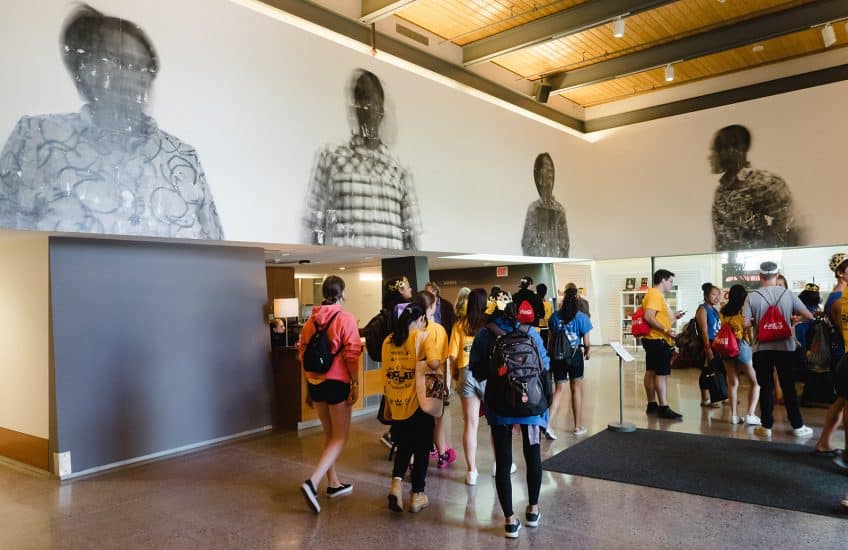
>> Hi, there. My name is Sunny Kerr. I’m curator of contemporary art at the Agnes Etherington Art Centre. And we are here in the Agnes Atrium to talk about a new installation by Canadian artist, Sandra Brewster, called Blur. And Blur is, first and foremost, a bold statement regarding black Canadians, black Kingstonians, almost as if it’s saying, “We are here.” Really asserting a kind of presence of black people in our communities. And this is important because we live in a climate that can be sympathetic to a kind of postracialist idea, a post-racialism idea wherein it’s almost as if normative cultures, white centred mainstream cultures, are saying racism is historical. We’re not racist. But at the same time, one often hears broad assumptions or one makes oneself broad assumptions like, you know, Kingston is so white — Canada is so white, which enacts a certain kind of erasure of racialized peoples and black Canadians, particularly. And so with this work, especially through her material choices, Sandra Brewster is making this kind of strong assertion at the same time that it’s — it has many layers of complexity. So at the same time that it’s making this bold assertion, it is also doing it in a complex way that, I think, eschews the politics of tokenism, and makes more complex the, kind of, demand for multicultural representation. And I think, through her material choices, Sandra Brewster is also — one of the keys to the work is that certain things are always kept hidden. So essentially, the work is images of three black community members from Kingston. One of them, of course, appears twice. There are four figures, as you can see here. Brewster is depicting them here in blurred motion. And in — and that’s the way in which she really gets at a kind of transitional state at the same time as there’s this, kind of, sticking to or presence, there’s also a sense of movement and transition within. Really influenced, I think, by Sandra Brewster’s own heritage. Her — the legacy of her own parents’ migration to Canada from Guyana in the 1960s. And it’s through precisely the — the material process, which is a gel transfer process. Ink is printed right onto the walls in a quite unpredictable and labour intensive process. And — and through this they come to look almost like old, worn photographs because of the kind of tearing, creasing, and folding that happens during the gel transfer process. I should say, finally, that the installation was also designed as a commission for the collection, whereby Sandra Brewster visited Kingston and, through an open call, photographed members of Kingston’s black community and made these new works, one of which will be entering the Agnes collection and then can be remounted at — at this scale in the future.